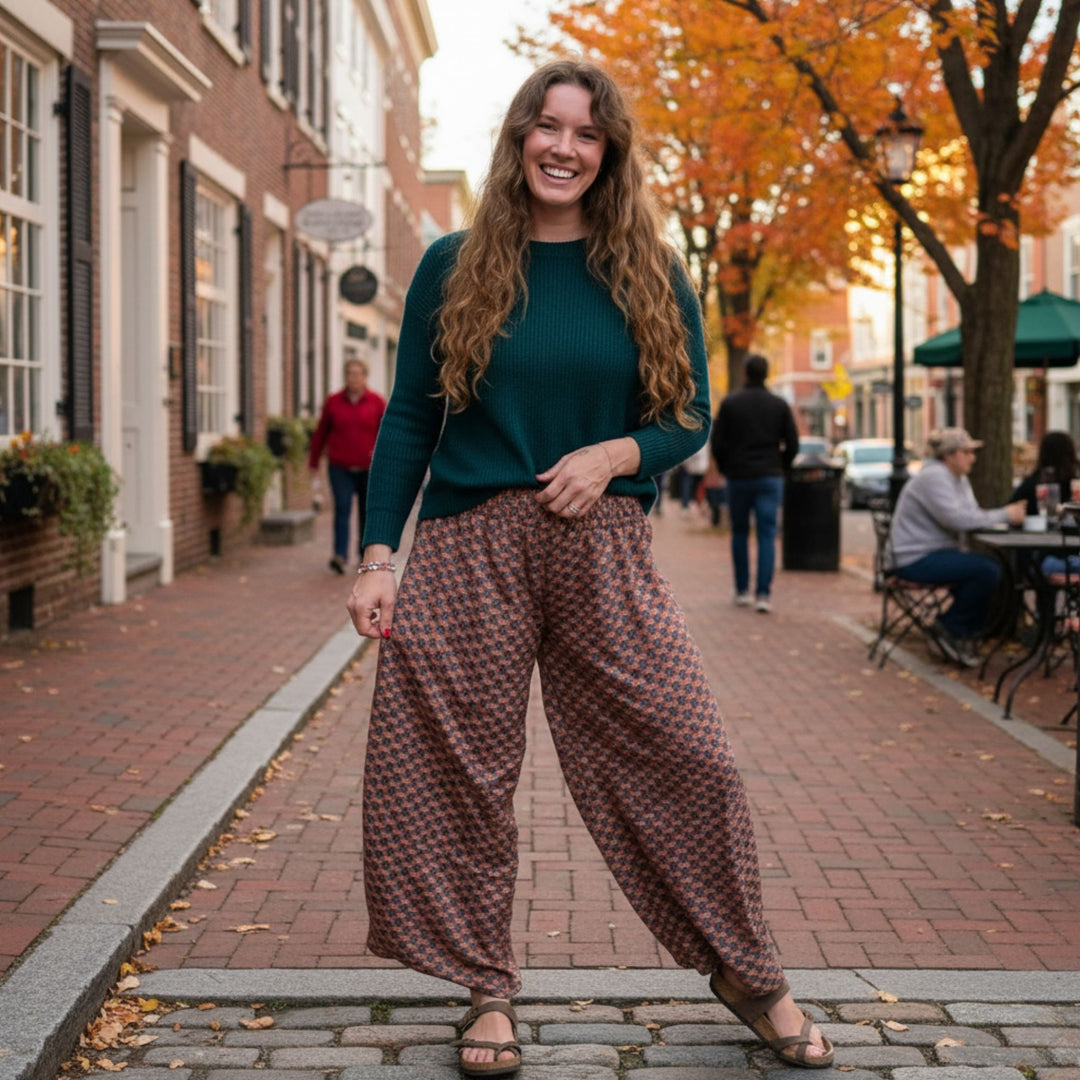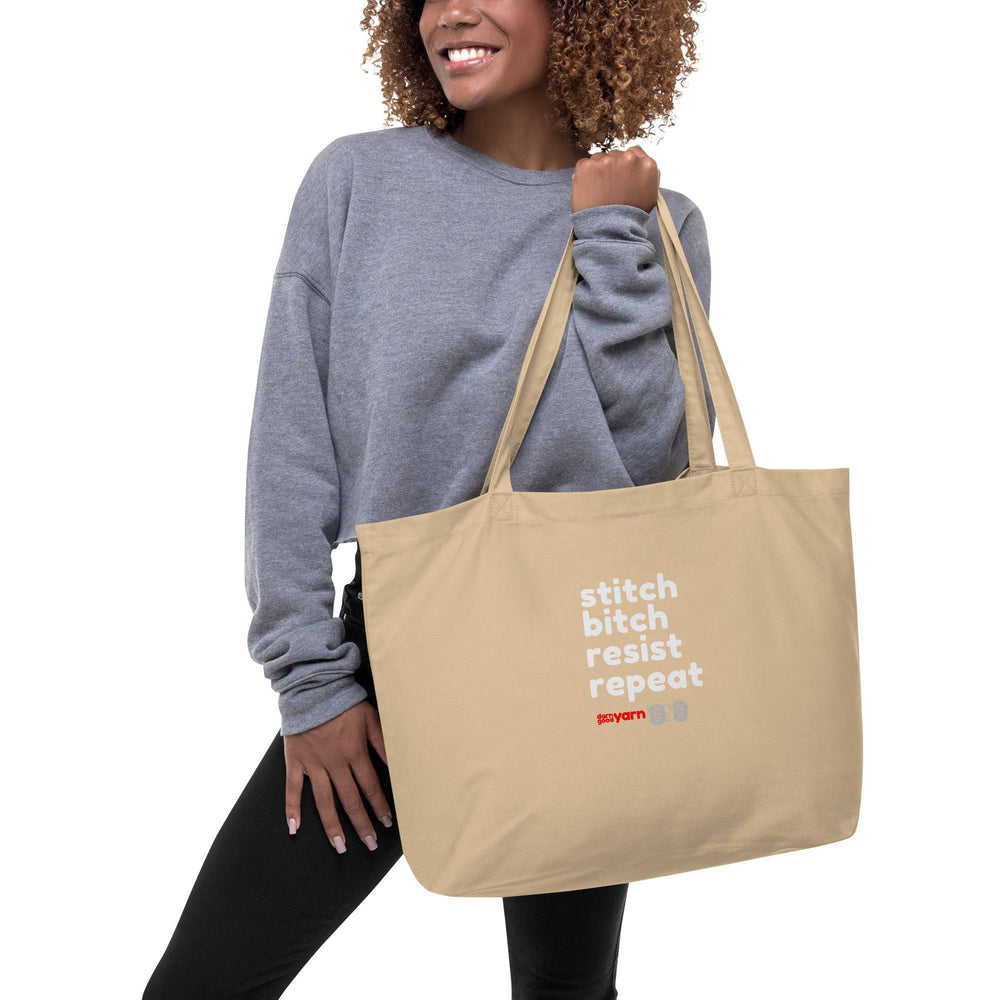Written by Alyssa Scott
When it comes to comparing crochet vs knitting, there are many reasons to love each style of fiber art. However when deciding between the two, there are several questions to consider, such as:
- Which is easier to learn?
- Which is faster?
- Which uses more yarn?
Keep reading for the answers to these important questions from a crafter who loves both!
Knitting and crochet are both methods of textile production that have the benefit of being easily done, highly portable, and manageable by a single person using simple tools. They can create fabrics that are similar in look and texture. So what are the differences that matter to you? Perhaps you’re a thrifty crafter looking for the best bargain on materials. Or maybe you’re looking for something quick and fun to do in your spare time. Perhaps you’re trying to stre-e-etch that beautiful skein you just bought into the largest project possible. Whatever the reason is, this information is vital for the versatile crafter.
Which is Easier to Learn, Knitting or Crocheting?
Learning a new skill always comes with challenges. If you’re wondering which craft might be easier to pick up as a beginner, there are a lot of opinions floating around that might make the decision more confusing than it already was!
The short answer is– each of these skills will take a little while to pick up. It’ll take some practice before you begin feeling comfortable with the hand movements, making the stitches, or reading a pattern. I don’t think one is easier or more difficult than the other, it just depends on your preferences as a crafter.
That being said there are some benefits to either craft that are worth noting when you’re trying to decide.

There are so many different styles of knitting, and I don’t just mean styles of knit items, I mean different styles of the physical act of knitting. If one way feels awkward or uncomfortable, there are many other ways to try before giving up! I originally learned the style of knitting called “throwing,” but found it awkward and cumbersome. I put down my needles and didn’t try again for about a decade. When I returned with more knowledge and different styles to try (thank you Youtube) I found that my hands enjoy the “continental combined” style, knitting suddenly seemed much faster, easier, and like a lot of fun!

The hook is the quintessential symbol of crocheting, for a lot of different reasons. For starters there is only one hook, as opposed to two needles for knitting. For the most part, crochet happens one stitch at a time. With only one stitch on the hook at a time compared to knitting which features multiple stitches on the needles all at once. There are certain styles of crochet which feature multiple stitches on the hook at once, which allows for incredible variety in the projects that you create.
As long as you’re ready to put in the practice and try out new things, neither knitting or crochet should be too daunting of a skill to learn. This is especially true thanks to the wealth of information and resources available online now-a-days.
If you have more specific questions about knitting and crochet, feel free to join our online community of enthusiastic crafters and tap into our collective knowledge for opinions, answers, or advice!
Which is Faster, Crochet vs Knitting?
This question can be answered in two ways, how fast can the stitches be created, and how quickly do the stitches build into a complete project. We’ll start with the former.
The speed at which a person can knit or crochet by hand depends on their experience and efficiency of movement. Either craft can be done at lightning speed or a turtle’s pace. I learned to crochet many years before I picked up knitting, and I’m still a faster and more intuitive crocheter than I am a knitter. I know some long-time knitters that can zip along with the needles but naturally slow down with a hook in their hand. To make a long story short, time and practice will help a crafter build speed using either technique.
The speed at which basic stitches build up is another matter. This has nothing to do with the crafter themself or how fast they can create stitches, it has to do with the creation of the stitches themselves. Knit stitches are created by pulling a row of loops through a previous row of loops, these loops tend to be pretty uniform in shape and size within a project. Many times, such as in stockinette stitch, they present as square building blocks. A knitting project grows slowly in this respect.

If you're brand new to the fiber art world and don't know where to start, we'd suggest our worsted weight silk yarn. The thickness is perfect for beginner crafters and we have tons of gorgeous colorways-including sparkle!

Crochet stitches have some variation that can make working up a project much quicker (with fewer stitches) than a comparable knit project. The different height options of crochet stitches are the reason for this contrast. There are a variety of crochet stitches that a crafter might choose to create with, there are several options that result in stitches taller than they are wide. HDC, DC, TC, and tall or long stitches are rectangular building blocks which can make a project grow quite quickly. The same amount of stitches and rows worked in single crochet will result in a smaller surface area of fabric as one created using double crochet stitches. A crochet project might grow very quickly in this respect.
Which Uses More Yarn?
You may have wondered if crochet uses more yarn than knitting, or vice versa. The short answer is that more yarn is used in a crochet project compared to a comparable knitting project. Think of the knit stitch in stockinette, insert needle into stitch, yarn over, pull through. Think of a single crochet stitch, insert hook into stitch, yarn over and pull through, yarn over and pull through two. More yarn is used to complete the single crochet stitch than a knit stitch.
Even when considering the change in ratio of yarn use vs height gained in taller crochet stitches, the efficiency of stockinette stitch still wins out. The height gained by creating taller crochet stitches still uses more yarn than the same surface area would in stockinette, even though there will be many more knit stitches in that area.
The considerations do change when garter stitch comes into question, the thickness of a garter stitch fabric is a result of the stitches taking up diagonal space within the fabric. The zig zag nature of this pattern makes garter stitch fabric grow a little slower vertically, and in fact the same surface area could be created using crochet stitches using less yarn.
In Conclusion
I hope this information is helpful to you in deciding whether to pick up a set of knitting needles or a crochet hook. These crafts are both so fun and relaxing, and they can be so useful in different scenarios that I hope you might consider trying out both some day.
Darn Good Yarn will always be there when you need some helpful tips, supplies, or projects to try out. There’s never been a better time to pick up a new skill which blossoms into a beloved hobby, so what are you waiting for? Get started today!

Alyssa began working at Darn Good Yarn in the spring of 2021. She has been knitting and crocheting as a hobby since childhood. Alyssa graduated from SUNY Plattsburgh with a Bachelor of Arts in Political Science and Gender and Women’s Studies, with a minor in Social Justice
 Rewards
Rewards


 Silk Roving Worsted Weight Yarn
Silk Roving Worsted Weight Yarn
















